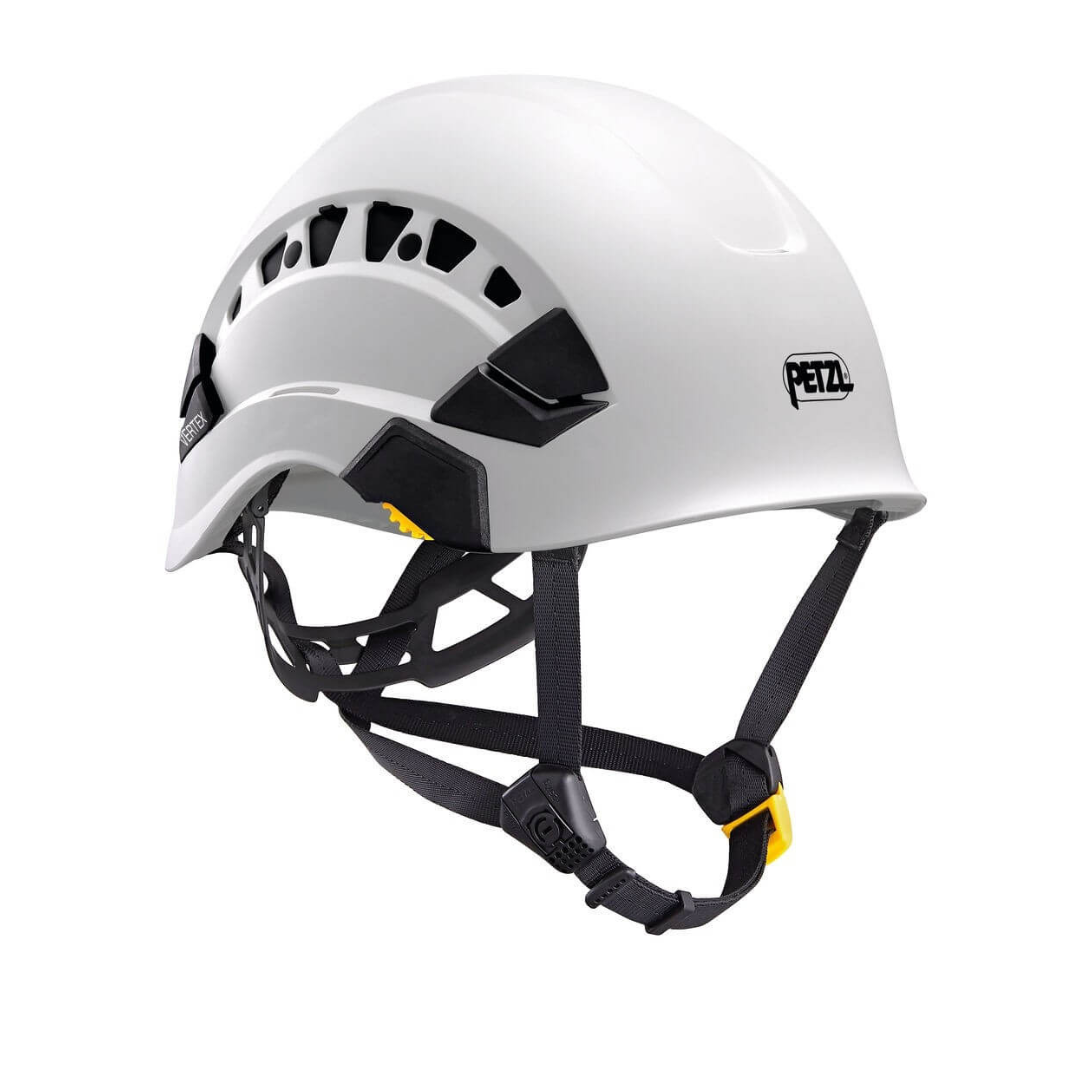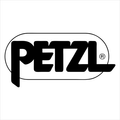
Shipping calculator
Payment methods
Product details
Petzl VERTEX VENT - A comfortable, ventilated helmet for working at height and on the ground
Made in France, the Petzl VERTEX VENT helmet is very comfortable, thanks to its six-point textile suspension and CENTERFIT and FLIP&FIT systems, which guarantee that the helmet fits securely on the head.
The adjustable-strength chinstrap makes it ideal for both work at height and on the ground. With ventilation holes with sliding shutters to allow airflow through the helmet, the Petzl Vertex Vent is highly breathable.
With its potential for integration of a Petzl headlamp, hearing protection, and multiple accessories, it is an entirely modular helmet, thus responding to the specific additional needs of professionals.
User Manual - Declaration of ConformityPetzl VERTEX® Product Features
Full Features & Benefits of Petzl VERTEX VENT Helmet

- 6-Point Textile Suspension conforms perfectly to the shape of the head
- CENTERFIT technology allows perfect centring of the helmet on the head, thanks to its two side adjustment wheels
- Standard comfort foam is interchangeable
- Vent Holes with Sliding Shutters allow the ventilation to be adjusted as needed while wearing the helmet
- FLIP&FIT system allows the headband to be positioned in a low position, guaranteeing that the helmet fits securely on the head. The system can also be ''flipped'' into the shell for easy storage and transportation.
-
DUAL chinstrap allows the worker to adjust chinstrap strength (<25kg or >50kg) in order to adapt the helmet to different environments: working at height (EN 12492) or on the ground (EN 397). To change the strength, you can switch the positions on the clip of the chinstrap based on your working environment. Watch the video in the ''Resources'' section to learn how to change the strength.
-High strength (>50kg): limit the risk of losing the helmet during a fall
-Low strength (<25kg): limit the risk of strangulation if the helmet is snagged while the user is on the ground - Shock Absorption achieved through deformation of the outer shell
- Eye shield with EASYCLIP side attachment system for easy installation
- Petzl headlamp with mounts, or headlamp with elastic headband
- Helmet protector keeps the shell free from soiling and paint splash
- Nape protector provides effective sun and rain protection for the nape of the neck
- Nametag holder allows user to be easily identified
- Changeable chinstrap and foam
- Hearing protection
- Head circumference: 53 – 63 cm
- Weight: 490g
- Colour: White, Blue, Red, Orange, Yellow
- Material(s): ABS (acrylonitrile butadiene styrene), nylon, polycarbonate, high-strength polyester, polyethylene
- Certification(s): CE, EN 397:2012, EN 12492:2012, ANSI Z89.1 Type I Class C, EAC

Safety Harnesses • Safety Lanyards • Safety Helmets
MORE ABOUT SAFETY HELMETS:
Petzl VERTEX VENT helmet complies to both EN397:2012 and EN12492:2012 standards. EN397 is a standard for helmets for industrial use while EN12492 for climbing and mountaineering helmets, meaning VERTEX VENT is ideal for both applications. To understand more about these two helmet standards, head over to the ''Resources'' section.
Type I helmets offer protection from blows to the top of the head
According to OSHA, a Class-C helmet complying with ANSI Z89.1-1969 specifications is acceptable on construction projects for protection against impact and penetration of falling and flying objects. Class C provides no protection for electrical hazards.
* Meets the requirements of the EN 397 and EN 12492 standards for impact protection. Satisfies optional requirements of the EN 397 standard concerning lateral deformation and use in cold temperatures.

Main requirement differences between EN 397 & EN 12492 standards
-
Ventilation:
EN1492:2012 requires the total ventilation area of a helmet to be greater than 4cm2 that VERTEX VENT can meet when there is no obstruction of ventilation holes. With its shutters closed, its total ventilation area is less than 4.5cm2, complying to EN397:2012.
-
Shock Absorption Requirement:
Compliant to EN12492, the force transmitted to the headform should not exceed 10 kN for a drop height of 2m. EN397 states that this force has to be less than 5kN for a drop height of 1m in order to protect the head against falling objects.
-
Penetration:
Both standards state the same requirement. There should be no contact between the striker and the headform for a drop height of 1m.
-
Flame Resistance:
EN397:2012 requires the helmet to stop burning 5 seconds after the flame is removed. VERTEX VENT fulfils it when shutters are closed. No such requirement is listed for EN12492.
-
Protection Against Molten Metal Splash:
While EN12492 does not include this requirement, VERTEX VENT which complies to EN397 allows no penetration of molten metal when the ventilation holes are closed. -
Chinstrap Strength:
The DUAL chinstrap of VERTEX VENT enables you to switch the strength of your chinstrap (>50kg or <25kg) to adapt the helmet to the hazards anticipated in your work environment - working at height or on the ground, making this helmet comply to EN12492 and EN 397 standards. Watch the video below to learn how to change the DUAL chinstrap.
- Working at height: EN 12492 requires a chinstrap strength setting greater than 50 kg to limit the risk of the helmet coming off in a fall. By switching the lock of the chinstrap to ''>50kg'' option, it can support a 50 kg force.
- Working on the ground: EN 397 requires a chinstrap strength setting less than 25 kg as helmets must have to be released in case of snagging at ground level to reduce the risk of strangulation if the helmet is snagged.
Inspect Your Helmet:
9 basic tips on how to properly inspect your helmets / hard hats.
Maintain and Protect Your Helmet:
Care and maintenance tips for your helmets [from Petzl].
Helmet Checklist:
It helps you to conduct regular inspections












